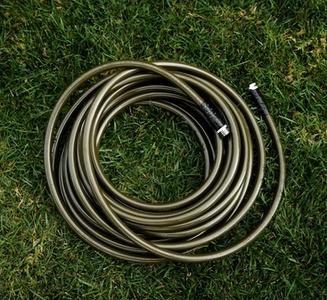What's a lesser known pollinator?
A lesser known pollinator tends to be an underappreciated insect that intentionally or unintentionally helps pollinate our flowering plants. While many people might think these pollinators could be a lawn or garden pest, they are actually doing much more good than any harm at all. So when you stumble upon some of these lesser known pollinators like ants, beetles, and flies—think about how you can be of service to them, as they are of service to all our growing plants!
Beetles
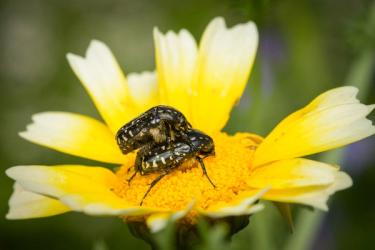
Often considered garden pests, beetles are crucial pollinators in our backyards and have been linked to pollinating common plants like goldenrod, yarrow, and sunflower. Beetle pollination looks much different than pollination by butterflies and birds. That is because beetles do not pollinate intentionally and are instead referred to as the "date and mate" pollinators. They often go from flower to flower, eating leaves, hiding from predators, and—you guessed it—mating, unintentionally moving pollen around as they do.
Method of pollination
Pollination performed by beetles is called cantharophily and is one of the oldest forms of pollination, dating back to 100 million years ago. This played a crucial role when bees and butterflies were yet to be species on Earth.
Ants
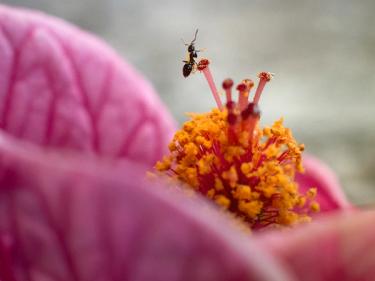
Ants are some of the most underappreciated pollinators and insects in our yards. Ants not only help aerate soil by moving aggregates around, they also serve as pollen vectors, helping move pollen grains from one flower to another in search of energy-rich nectar. Ants in North America have been linked to interacting with—and potentially pollinating—alpine nailwort, Cascade knotweed, and Small's stonecrop. Pollination from ants is helpful in arid or alpine environments, where flying insects may be less abundant. And while ants have body secretions that may decrease the viability of pollen grains, their size allows them to feed on nectar and disperse pollen without harming the flower.
Method of pollination
Pollination performed by ants is called myrmecophily. This method is somewhat controversial but still deserves a shout out!
Flies
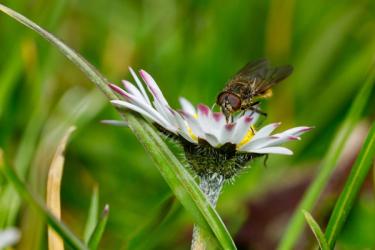
Let it be known—flies are the second most important group of pollinators (bees are the first!). Flying animals are the best at transferring pollen in general because they can transport pollen faster and carry it longer distances. Why are flies right up there with bees as the best pollinators? Flies are attracted to the nectar that flowering plants produce and visit multiple flowers in search for food. Flies, similar to bees, have furry exoskeletons so when they're searching for nectar, pollen grains often stick to them and get carried from flower to flower. Just like bees, flies support so much of our food—some are even specialized pollinators and have short tongues so they can feed from plants with shallow flowers (think: mangos or carrots!).
Method of pollination
Pollination performed by flies is called myophily and is incredibly common.
Sunday Science Fact: Some flies intentionally mimic more dangerous-looking insects like bees as a way to protect themselves from predators. This gives the soft and defenseless fly the appearance of a more threatening creature (think stinger!) and is called Batesian Mimicry.
Moths
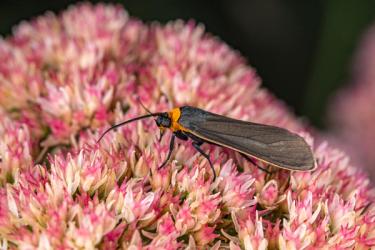
Many people think moths just hover around our light fixtures and are pests, but moths play a critical role when it comes to pollination and supporting your backyard ecosystem. They contribute greatly by being generalists, meaning they have a wider range of host plants to feed off. But many moths are specialists in that they have a very long tongue to reach the nectar of long-necked flowers—many of which are inaccessible to typical pollinators. Moths also play an impactful role in the lives of other pollinators, like birds, by being an important food source. Moths have been tied to pollinating plants with white or pale-colored fragrant flowers, with ample nectar and flowers that only open up in the evening or early morning hours—think morning glory, yucca, and evening primrose.
Method of pollination
Moths pollinate similarly to bees and butterflies, with the main difference being their long, narrow tongues that can reach tough-to-get nectar.
Sunday Science Fact: Many moths are nocturnal and actually help “take over” pollination during the night—along with bats. Because of this, one study suggests their role in pollination is much broader than previously indicated.
How to support pollinators
No matter the plant or the popularity of the pollinator, they all play a significant role in the way we live our lives. With our reliance on their services, we at Sunday encourage everyone to do what they can to support the various species of pollinating animals—both known and lesser known. And why not get started right in your own backyard? Here are three ways you can start supporting pollinators now:
- Build pollinator habitat. Incorporate pollinator-friendly plants like wildflowers or native trees into your yard to provide feeding and nesting resources. Consider a variety of colors, flower shapes, and bloom times to support diverse groups of pollinators throughout the season.
- Avoid pesticide use. Limit pesticide use in the garden and backyard. Be careful to never apply to flowering plants.
- Promote connectivity. Work with neighbors to build connected native plant habitats as a way to provide pathways and habitats for pollinators even among residential structures.
Cited sources
Ant Influences on Pollination and Some Other Plant Services. The University of Maryland, College of Agricultural and Natural Resources
Drone Fly, Rat-tailed Maggot Eristalis Tenax (Linnaeus) (Insecta: Diptera: Syrphidae). University of Florida IFAS Extension
Moth Pollination. United States Department of Agriculture
Rader, Romina, et al. Non-Bee Insects Are Important Contributors to Global Crop Pollination. Proceedings of the National Academy of Sciences, vol. 113, no. 1, 2015, pp. 146–151.
Unusual Animal Pollinators. United States Department of Agriculture.













